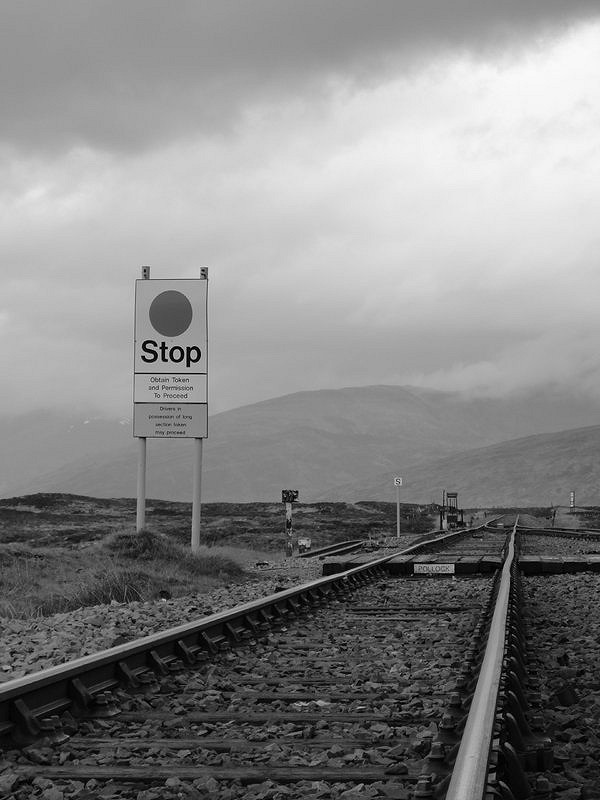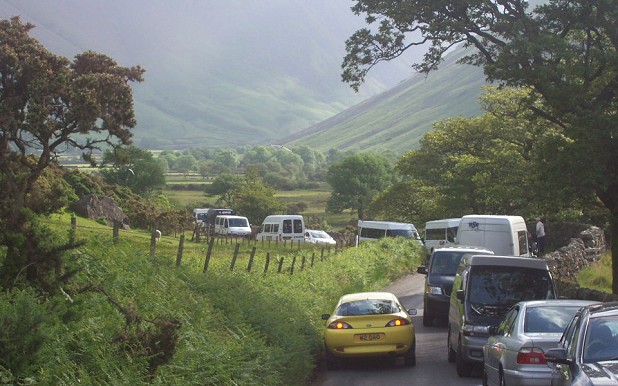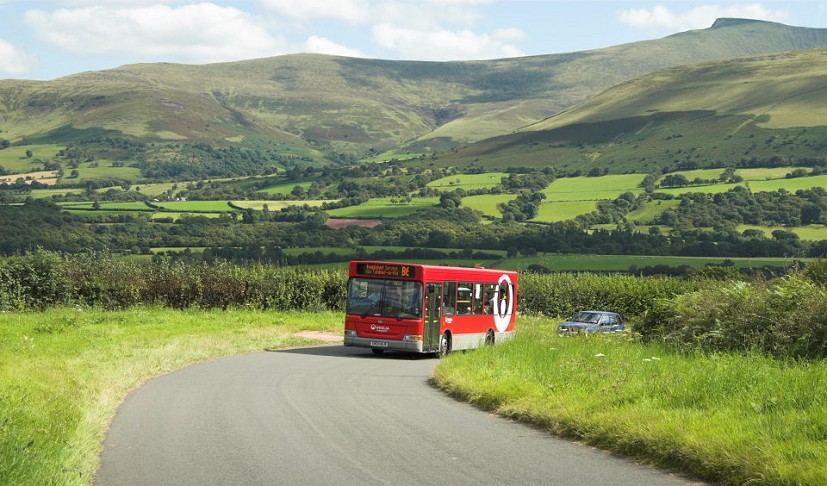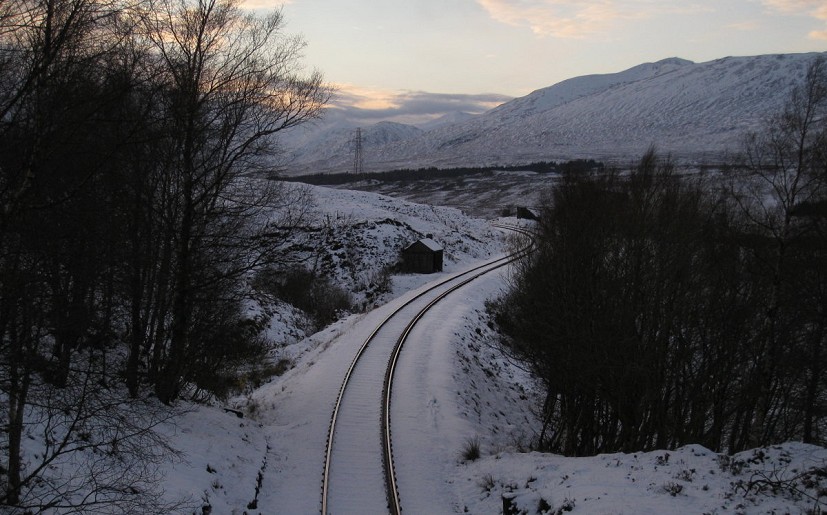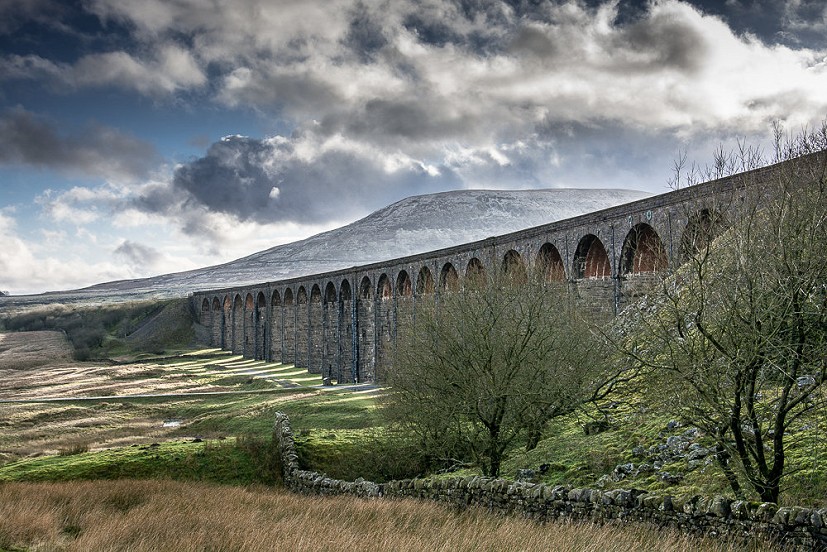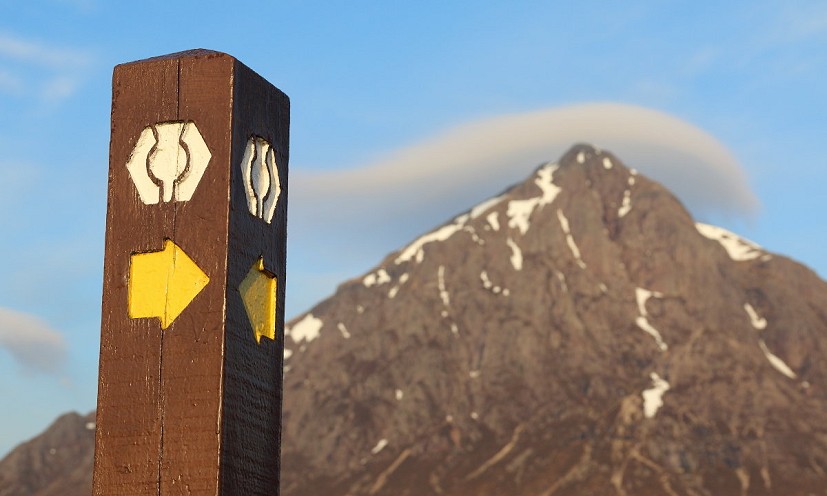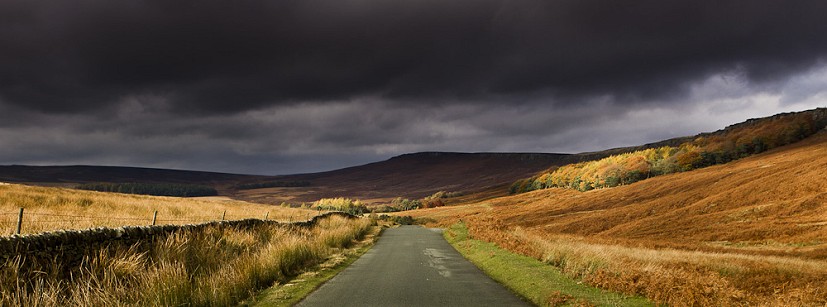How To Climb Hills by Public Transport
There's no getting away from it: hillwalking is way more convenient by car. Who wouldn't prefer to spend less time in transit, and more on the hill? Having your own set of wheels brings remote areas unserved by public transport within reach. And yet many of us will have started our hillwalking lives long before we owned a car. And somehow we coped. A rare few even prefer public transport on environmental grounds - and with narrow hill roads and car parks overflowing at weekends they probably have a point. If, like most, you're a hillwalker more or less welded to their car, then it's good to be reminded once in a while that there is another way. With forward planning and a shift in attitude it's surprising how many hills can be readily accessed by bus or train. These tips should help you get the most walking mileage out of the public transport system.
The pros
If you're lucky enough to have a car, then why on earth would you voluntarily leave it behind? Hillwalking by public transport has a lot to recommend it, according to Drew Whitworth, who managed to visit all 214 Wainwright fells in the Lake District from his Yorkshire home without once setting foot in a car (see our interview with him here). It can't have been too onerous, as he's now working on the 116 Outlying Fells (article here).
"Why do I like to go walking without a car?" he says, "Well most of all I like to get to the end of a walk and turn off, not have to worry about driving home. I can relax, have a beer or two, and I don't have to stress myself out by driving down the M6, or whatever."
"Also, I do believe that there are too many cars in the hills and on roads generally. Places like Buttermere and Mardale Head can feel like giant parking lots on busy days. I want to support public transport and believe in the notion of 'use it or lose it'."
Fail to plan and you plan to fail
"Hillwalking by public transport is all about planning" says mountain writer, regular UKH contributor and public transport habitue Alex Roddie (alexroddie.com).
"Improvisation is only likely to be successful if you live very close to the mountains - a truth I've learned the hard way. For most of my life I've lived hundreds of miles away from the hills, and have never owned a car. I've found that if you plan things out well in advance, and take a relaxed attitude to the whole process, things very rarely go seriously wrong."
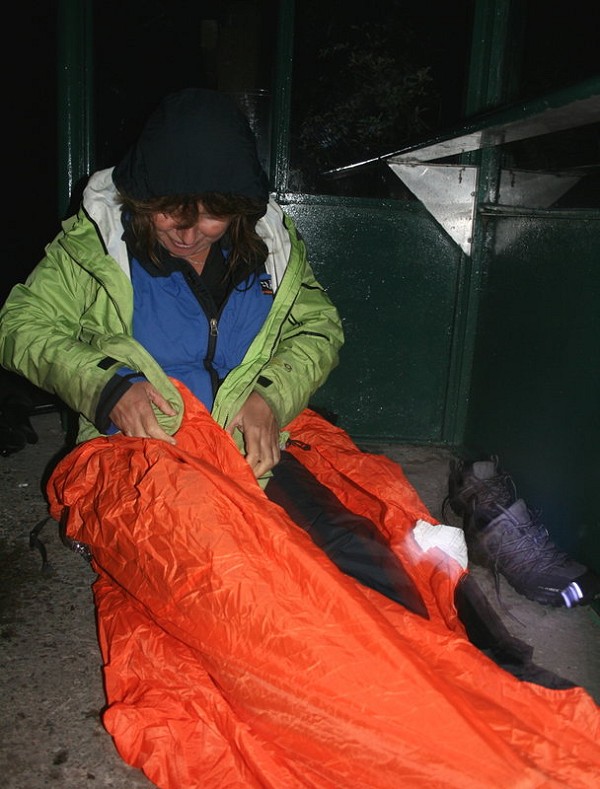
"You will almost certainly need more time. For example, I live in Lincolnshire. By car, Glen Coe is about seven and a half hours away; by public transport, that figure can increase to as much as twelve hours. If you plan well in advance it can be surprisingly affordable, but book your ticket the day before travel and you could be looking at a 160 bill for an open return."
"Forget about mucking around with train timetables. These days an app is the way to go. I like using the Trainline, which lets you plan journeys, book tickets, and check the status of your journey from within the app - even letting you see which platform your train departs from, and which carriages have empty seats. For buses, the Bus Checker app is almost as good. But whichever apps you choose, the key to success is to figure out how you're going to get from A to B well in advance, and leave yourself plenty of time for your connections. Because sometimes things do go wrong!"
Get on top of the info
Time spent with a map of Britain's train network can be eye-opening. Railways run close to - or even bang through the middle of - some of our best hill country: step out of London's evening rush onto the sleeper train, and you can emerge next morning in the desolate heart of Rannoch Moor; trundle along Snowdonia's northern or western coastal fringes and you're just a short stumble from the Carneddau, Cadair Idris or the Rhinogydd; alight from the Sheffield-Manchester service at Edale and you're right at the foot of Kinder Scout; catch the classic Settle-to-Carlisle line and you've got classic Yorkshire Dales scenery without even having to stir from the seat; ride the train west from Inverness and the seemingly unreachable delights of Torridon, Glen Carron and Skye are all (more or less) in reach. It just takes a little research.
"First and foremost, plan ahead" agrees Drew.
"Check schedules well in advance and keep important times written down somewhere: don't depend on being able to check things on your smartphone when you are in remote areas. Know not just the time of the bus or train you are aiming for but also the ones before and the ones after, just in case. That way you can have the freedom to change plans mid-walk, say if the weather changes or you just fancy a shorter or a longer walk than originally planned."
Travel resources
Traveline is a 'partnership of transport companies, local authorities and passenger groups which have come together to bring you routes and times for all travel in Great Britain by bus, rail, coach and ferry, and to provide it in as many different ways as we can so that you can always reach us' see www.traveline.info
Maps of Britain's rail network and other info on travel by train is available from National Rail Enquiries at nationalrail.co.uk
Learn to navigate the ticketing system
"Ticket pricing throughout the UK is highly illogical and is designed to confuse" says Drew.
"Train tickets get expensive if you can't book in advance and of course for walkers that's difficult because we sometimes change things if the weather is looking good. If you travel on a route regularly, try to learn where tickets can be split to make things cheaper (for example, if going to the Lakes I don't buy a ticket straight through to Windermere but to Preston or Lancaster first, then I go on from there. This can reduce the price, sometimes by up to 20). If you are a family, get a Friends and Family railcard. Check out day ranger tickets in your area. You just have to learn where the bargains can be found."
Take your bike on the train

Combining public transport and cycling can get you a surprisingly long way. With a reasonable pair of legs and a roadworthy bike, even laden with panniers of camping gear, a fairly conservative estimate would put your speed at about 10mph. Just two or three hours of scenic road biking from a remote station therefore could get you into the heart of almost any public transport black hole in the country, bringing even the least accessible corners of highland Scotland within reach. Better still, bring a mountain bike and you're not even tied to the tarmac. Forestry roads and estate tracks could be yours for the taking, putting you right at the foot of far-flung hills and getting one over on the non-cycling drivers. You'll need to allow extra time and energy of course, plus spare inner tubes and the like, but assuming the weather plays ball and the midges aren't too hellish then the two-wheeled bit of the journey can be an enjoyable part of the adventure in a way that a hermeticaly sealed drive never could. As well as getting your bike on the train, some bike-friendly bus services also exist - for instance the Inverness to Durness Bike Bus (see here); but bear in mind that space on most of these services, rail included, has to be booked in advance.
Go long distance
Ours is a small country, and you'll never have to walk that far in a given direction before hitting the next road or railway. Long linear routes are ideally matched to public transport, since you're not obliged to return to the car park from which you set out. It is perfectly possible to break long distance trails such as the Pennine Way into bite-sized chunks, tailored around bus and rail routes. With its easy linkups to a variety of bus, train and even boat services, the West Highland Way is a perfect example; in fact you'd actually be better off accessing the start and finish by public transport than by car.
Be prepared to hitch-hike
You've done the Dodds and Helvellyn and hit the road tired, only to discover that the next bus back to Keswick is not for hours; you've knocked off Liathach in the rain and descended to the glen sodden ...and the youth hostel is miles back the way you came. But don't despair, a solution is at hand - literally. Travelling by thumb may be out of fashion these days, but it has a long and venerable pedigree. Most hillwalkers over a certain age will have resorted to it in their cash-strapped youth, and it remains a viable - if a bit random - option. Gone are the days when we would happily spend all day chancing our arm for a free ride - or more often a stop-start series of short indirect rides - on long cross-country journeys to the Lakes or North Wales. That's what trains are for. Nevertheless hitching is still a valuable tool in the arsenal of any car-free hillwalker. Thumbing a lift is probably best saved for remote hill areas, where the relative lack of passing traffic, and thus available chauffers, is offset by people's greater willingness to pass the time of day with strangers. So put on your most innocent face, try not to look too wet or too weird, and be prepared for a long wait.
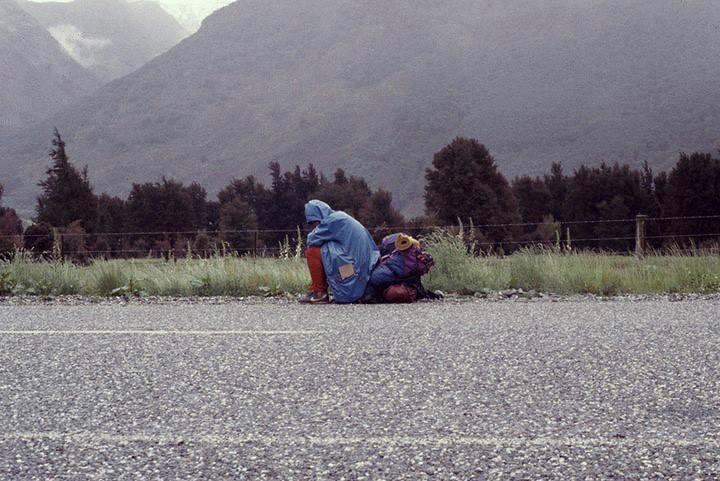
Survival tactics for when it all goes pear-shaped
Over his many long schleps up and down the country by public transport it hasn't always been plain sailing (or busing, or training) for Alex Roddie:
"In my early years of hills by rail and bus, I was a lot less organised" he admits.
"I lost my wallet on a bus in Snowdonia in 2005, leading to confused phone conversations with the local police station and a bit of negotiation with the bus driver the next day ("Aye, I've got your wallet, but taken a fiver out for my trouble"). I somehow succeeded in getting to the Lake District in 2006 without even looking at a timetable (no apps in those days!) but wasn't quite so successful in getting home. And once, in 2007, I tried to get to Scotland from Norwich but only managed to get as far as Peterborough, where I spent a cold few hours stranded on the platform in heavy snowfall."
"Despite the years of lessons learned, the worst rail fail of my life occurred in 2014, on my way home from Lochaber. Storms and high winds closed the road between Fort William and Glasgow, adding hours to the journey. By the time I got to Glasgow there were no options for onward travel that day. My phone had died on me, and all the affordable hotels were fully booked. I phoned my partner on a payphone to let her know I was going to bivvy in the station, but she would have none of this so contacted friends who live in Glasgow, and they swooped in to rescue me. It was a bit of a shambles."
"The most important survival tactic is to give yourself enough time" says Alex.
"As a rule of thumb, rail connections require a bare minimum of at least five minutes - less than that and random delays on the line can scupper your plans. Equally, it's a bad idea to travel on the last train of the day. Make sure there's at least one more train you can catch if you do miss a connection. And if it all goes completely tits up and you find yourself stranded somewhere, the last thing you want to be doing is stressing about work at 9am the next morning."
"Friends in strategic locations can really help. While imposing yourself on others is never a good idea, it can be nice to combine a trip to the hills with visiting far-flung friends. This provides a bit of a safety net in the event of real problems."
Cultivate your patient side
Fast, integrated public transport is a utopian fantasy in the franchised lottery of austerity Britain, and it should come as no surprise how much time can be spent in transit, stuck on sidings or awaiting ill-matched connections. You've got to roll with it.
"A relaxed and positive attitude will help you cope with the little hiccups of public transport" reckons Alex. "I've been through enough rail fails and bus disasters to realise that nothing is as bad as it might seem, and that you'll almost always get to where you want to go. Staff are more likely to help if you're calm and polite, too."
Playing the waiting game is hard to do in this age of instant gratification, but if you've brought a good book there can be a quiet enjoyment to be gained in time spent sitting quietly on station benches, train and bus seats, and at deserted crossroads in the rain. Alternatively, if peaceful contemplation is alien to you, consider it a good chance to clear the email inbox.
Writer and bothy fan John Burns is no stranger to long waits. Here he is at Corrour, the 'Station at the End of the Universe':
"This doesnt feel right. There is something very surreal about this place. All around me is utter blackness. The beam of my brand new, more powerful than the sun, head torch sweeps across the moorland and finds nothing but empty space."
"The temperature is dropping now and I find myself shivering and becoming despondent with the realisation of just how long I'm going to have to stand in this black, cold place. I retreat into my down jacket, grateful for the cocoon-like warmth it offers. I try not to look at my watch, reasoning that if I look and less time has passed than I expected, I'll be even more disappointed."
"This is the station made famous by its role in the film Trainspotting. Alone in the blackness I shine my torch on to the timetable and have to read it several times to make sure that there really is a train coming at 21.20. Around me is open moorland and beyond that the high hills rise to snowy crests."
"Is this really a station? Will a train actually come? I ask myself. This seems such an incongruous place for a station to be. I wait two hours, while the temperature falls below freezing around me, so glad for my duvet jacket. Suddenly there is a rumble and an explosion of light and the train rolls to a halt before me."
"Climbing on board I am suddenly in an alien world. Families, on their way home from shopping trips in Glasgow sit playing cards. Businessmen sit drinking wine, unwinding from their meetings. Japanese tourists watch me, fascinated, as I, a creature from another world, enter the train. It's noisy, crowded but above all warm."
"I get a cup of tea from the trolley attendant. Like all railway tea it is weak, tasteless and scalding hot. I struggle to drink it in the short time I have before I get off the train. I'm in heaven, it's the best tea I've ever tasted!"
- This is an extract from a piece that first appeared on John Burns' blog - for much more of this sort of thing see here
